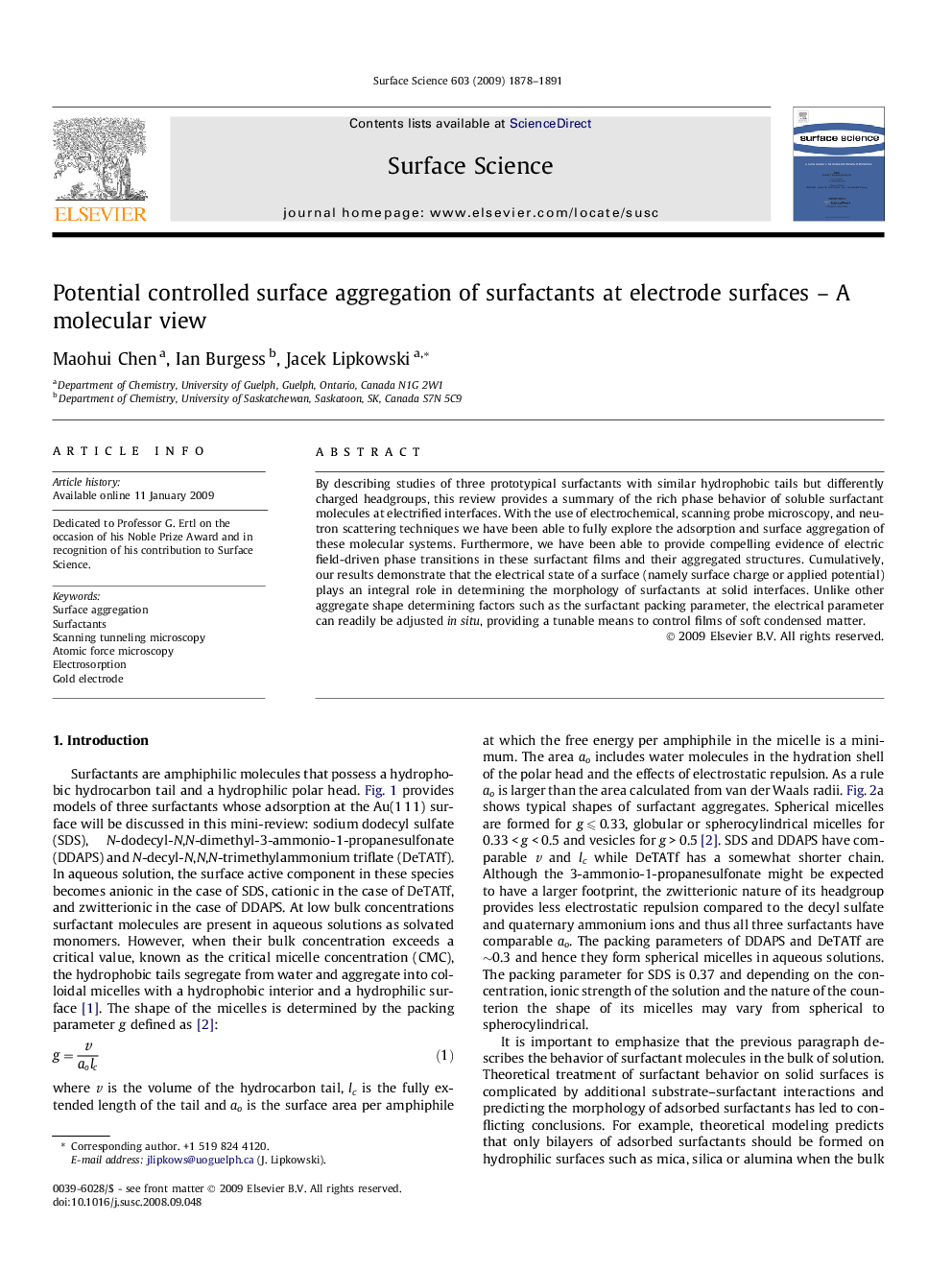| Article ID | Journal | Published Year | Pages | File Type |
|---|---|---|---|---|
| 5424248 | Surface Science | 2009 | 14 Pages |
By describing studies of three prototypical surfactants with similar hydrophobic tails but differently charged headgroups, this review provides a summary of the rich phase behavior of soluble surfactant molecules at electrified interfaces. With the use of electrochemical, scanning probe microscopy, and neutron scattering techniques we have been able to fully explore the adsorption and surface aggregation of these molecular systems. Furthermore, we have been able to provide compelling evidence of electric field-driven phase transitions in these surfactant films and their aggregated structures. Cumulatively, our results demonstrate that the electrical state of a surface (namely surface charge or applied potential) plays an integral role in determining the morphology of surfactants at solid interfaces. Unlike other aggregate shape determining factors such as the surfactant packing parameter, the electrical parameter can readily be adjusted in situ, providing a tunable means to control films of soft condensed matter.
